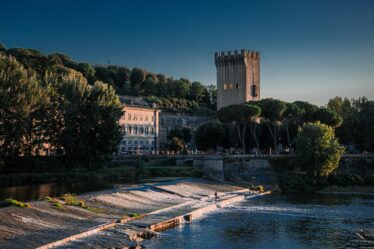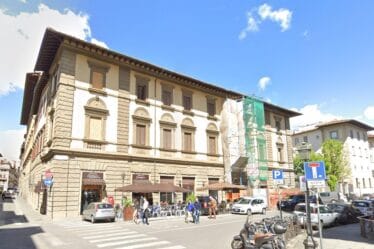

In 1888, the pope brothers built the “Great Emporio Duilio” on the ruins of a medieval church; the name was later adopted by the Royal Marina battleship “Caio Duilio.” The inside was decorated in a maritime theme, and even the clerks were costumed like sailors. Giuseppe Siebzehner, the owner, renamed the warehouses “Emporio Duilio 48” in 1907, and they later became the “Duilio 48” department store. This big shop became the first great “warehouse” in Italy, for all means and purposes. The novel concept in sales, the first self-service, and for the price of 48 cents every product inside (thus the name). Other people were curious, and they could enter without having to make a purchase. In 1944, the poor Jewish Siebzehner of Polish descent was sent to concentration camps in Germany with his entire family by the SS, where he ultimately died. The warehouse was originally passed down to his brother Federico in the 1980s, followed by his nephew Bemporad until 1986, when he was purchased by the former Coin.
During the renovation work, Roman testimony were discovered (relics of marble flooring and the base of a column), atop which medieval remains, including a well that is still visible. The entire area was erected on top of an ancient church called S. Bartolomeo (11th century), which is one of the earliest Florentine parishes. The church is first mentioned on June 25, 1132, in a donation of some lands and homes to the Church: “In Presentia Guidonis Prebitali Ecclesie Sancti Bartholomei Florentine Civitatis” (in the presence of a young priest at the church of San Bartolomeo, Florentine city). San Bartolomeo was the patron saint of painters, and many of them lived in this neighborhood, hence this stretch of road was once known as “San Bartolo among the painters”. Patronata by the Macci and other local families; in fact, some papers refer to it as “San Bartolomeo de’macci”. The macci owned the mansions in front (including the Torre dei Macci) and supported the greatest chapel. It was designed according to the Rustic Code, and it is embellished with a three-arched loggia with two-tone, Romanesque-Toscano style, and gone columns with capitals with Leonine and ram heads, a beautiful portal with a bezel with two bas-relief dragons on the sides of a roselon, and a mullioned window in the upper part of the façade. Bernardino Poccetti painted the main altar with frescoes.
After being suppressed, it was demolished during the street’s expansion between 1842 and 1844. The church was located next to the department store’s entrance, and two side columns can still be seen in via Calzaiuoli today. On the left of the entry, at the top, there is a marble monument in memory of the church that contains the writing: “In the MDCCLXVIII it was reduced for secular use the church of S.Bartolomeo here erected in the under century”. If you want know more about story about like this and discover secrets of Florence come wit us. We are running a Free walking tour of Florence, we are starting our tour from Santa Maria Novella square in front of Minerva hotel.



